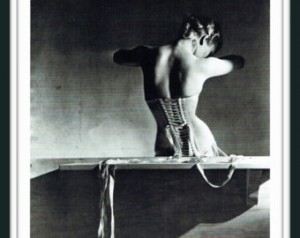When you think of silver screen sirens of the 1940's, more often than not your mind will trip over sultry beauty, perfect eyebrows, lipstick that never seems to smudge, and perhaps an uncanny knack for making cigarettes look sexier than a dog eared Pall Mall has any right to look. They were lauded for their beauty and leading roles, and their popularity determined by their ability to ‘play the game’ with studio bosses, the media and the ever-fickle public eye.
Women gracing the screen were expected to look pretty and offset the raffish charm of their leading men, and yet many iconic actresses from the era have fascinating back stories that weren’t granted the column inches guaranteed by a sex scandal, a celebrity marriage or the glitterati rumour mill. Jayne Mansfield is a case in point – the blonde bombshell commonly touted as a ‘working man’s Marilyn Monroe’ saw mainstream success in the 1950's due to her impressive chest-waist-hip measurements and breathy, baby-voiced roles; and yet was purported to have had an IQ of 163, as well as having spoken five languages.
The trend continues today – with celebrity gossip rags gleefully reciting the academic achievements of actresses such as Emma Watson and Natalie Portman – as though the possession of a great set of cheekbones automatically means that their owner has the mental faculties of a breezeblock.
My favourite of these closet intellectuals is Austrian-American actress Hedy Lamarr. Hedy is an interesting character on so many levels. She is stunningly beautiful, she has a fantastic name (Hedwig Eva Maria Kiesler), she made ballsy career choices, and she happens to have been the inventor of a form of radio guidance technology still used today.
Born in 1914 in Vienna, Hedy was beginning to make a name for herself over in Europe before Hollywood ever got to grips with her. She was the leading lady in a scandalous 1933 German film called Ecstasy, which made headlines due to the fact that Hedy spends a large proportion of the film running around naked – and – potentially – was the first non-pornographic film to depict the female orgasm. She ran away from her husband shortly afterwards and hid out in Paris, where she met MGM boss Louis B Meyer, himself scouting Europe for new talent - who, I imagine, lit a cigar and told her that he’d make her a star.
Hedy’s film career in America was illustrious, with starring roles opposite Clark Gable, James Stewart, Spencer Tracy and Charles Boyer. She starred in Samson and Delilah and was labelled “the most beautiful woman in Europe” by director Max Reinhardt.
However, the reason that I am such a huge fan of hers isn’t just because she shrugged off controversy to act in films such as Ecstasy, or that she is the type of person to flee her husband and set up in the bohemian enclaves of Paris of the 1930's – but because simmering away underneath her beauty was a formidable brain capable of inventing technology that has made modern day advancements such as WiFi even possible.
At the beginning of World War II, Hedy implemented a radio guidance system to be used for Allied torpedoes. It utilised frequency hopping and spread spectrum technology – more on that here – and, although it wasn’t used during the wartime effort, the US Navy rediscovered her invention during the 1960's Cuban Missile Crisis and incorporated it into their repertoire. The advances that she made are still used today; in WiFi, CDMA, and Bluetooth technology.
Throughout her acting career, Hedy was typically cast as the exotic seductress, and would often slink across the screen like a cat, but have very few lines. She reportedly felt unchallenged by acting, and started inventing as a means of relieving her boredom. She invented a new and improved traffic light, and a tablet that dissolved in water to make a fizzy drink. The tablet idea flopped and apparently tasted terrible. She also had two babies during the course of her Hollywood hey-day, which solidifies her in my mind as some kind of Wonder Woman.
Her torpedo radio guidance system idea was artistically inspired by piano rolls, and although it showed signs of promise at the time, the military weren’t keen to take on ideas by civilians during the war. It was only later that the Navy adopted her ideas.
Her later story is just as fascinating. She professed to have made – and spent – thirty million dollars over the course of her career. She was arrested for shoplifting twice, the charges being dropped on both occasions. Andy Warhol made a short film about her in 1966 – called Hedy – and her autobiography was reviled by a judge as “filthy, nauseating and revolting.” She later sued the ghost writer for fabricating anecdotes – however I’d love to think that some of them were true – namely that when fleeing her husband in the 1930's, she hid out in a Paris brothel, having sex with a customer to avoid detection. She later allegedly hired a maid who strongly resembled her, and drugged the maid, stealing her uniform in order to escape in disguise.
Hedy combines intrigue, exoticism, intellect and a devil-may-care attitude that makes her, for me, one of the most compelling characters of Old Hollywood.











